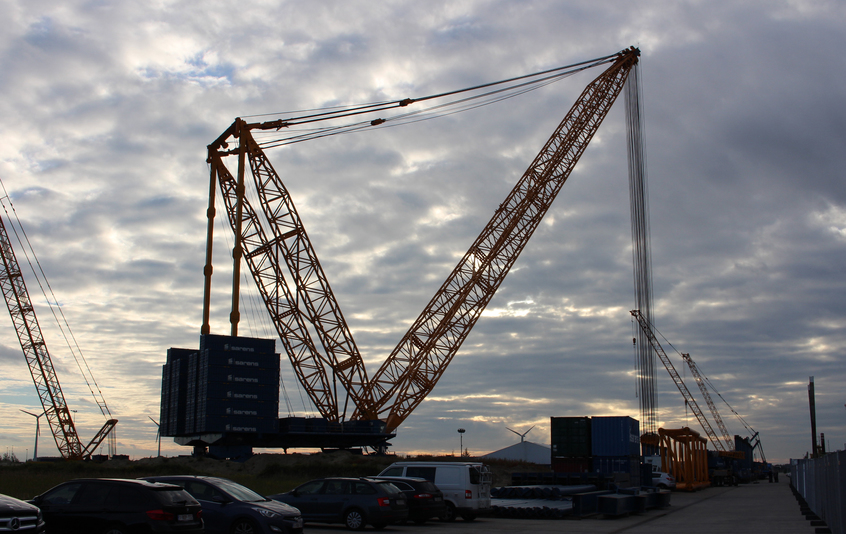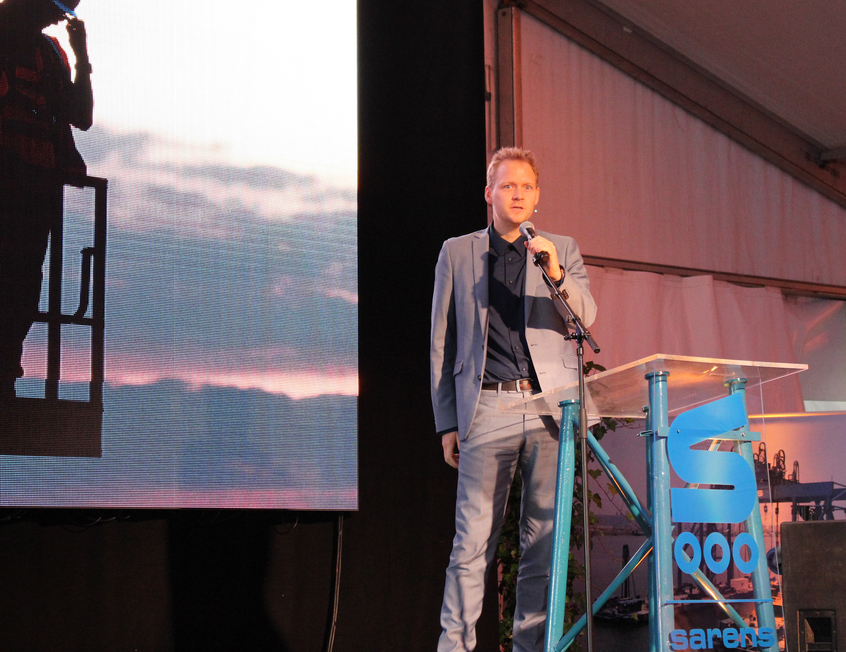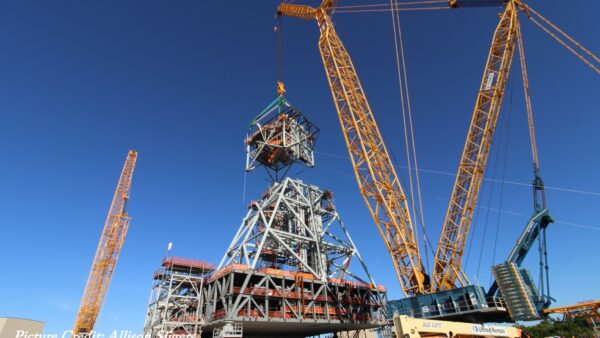Sarens, the Belgian heavy lifting specialist, this month unveiled the world’s largest heavy-lifting crane and trailed the coming in two years’ time of an even bigger lifter, which remains shrouded in mystery.
The unveiling at its works in Ghent means its famous “Big Benny” crane, the SGC 120, is now superseded, but that takes nothing away from its illustrious, six-year career lifting extremely heavy things all over the world.
The company operates some 1,600 cranes in 65 countries but historically it relied on manufacturers such as Liebherr of Switzerland to supply it with the equipment.
Six years ago it began operating the first crane it had designed and fabricated itself. This was the SGC 120, or “Big Benny” as it was known. It had a maximum lift of 3,200 tonnes, equivalent to 250 double-decker buses.
This massive unit has now been exceeded by Big Benny’s Big Brother: the SGC 140.
“Bigger Benny” has the same lifting capacity but can move weights around a larger radius, which means it is able to work on projects with a greater area without having to be dismantled and moved to another position. It can be built with a boom of 130m, to which a jib of up to 99m can be added.
An even bigger crane, the SGC 250, is due to hit the market in 2019 but the company is not releasing any details of its specifications.
The process of assembling a crane of this type is illustrated in this YouTube video.
The Caspian job
The SGC 140 will make its debut on a three-year contract helping to build an oil refinery in Kazakhstan and installing equipment to increase the reservoir pressure in the giant Tengiz field in the northern Caspian Sea.
It is Sarens’ biggest ever contract.

Bigger Benny”, the SGC 140, has the same lifting capacity as the SGC 120 but can move weights around a larger radius
The client is Tengizchevroil, or TCO, a consortium that includes Chevron, ExxonMobil, KazMunay Gas, the Kazakhstan state operator, and Lukoil of Russia. Last year, TCO approved a $36.8bn expansion to the Tengiz field, and Sarens’ contract is part of that programme of works.
The TCO contract may make up as much as 20% of the Sarens’ €600m turnover over the next three years and, to carry it out, the company is looking to expand its workforce from 4,100 to about 4,600 by the end of the year.
For Sarens it will be a global project. The crane was built in Belgium but based on engineering work done by the company’s US arm.
The preassembled equipment to be used in the field will be collected in two transshipment bases, one in Finland and one in Bulgaria, where it will be offloaded from container ships to smaller vessels for transportation along Russian rivers to the Caspian.
Updating the image
Chief executive Wim Sarens, the founder’s grandson, told GCR that Sarens decided to build the SGC 120 and 140 when its clients began asking for cranes that its suppliers could not deliver. He said the consortium of Belgian banks that own a little less than a quarter of the company were confident that the move would pay off, and cited the constant demand for the 120 unit from projects around the world (see below).
He added that when the Tengiz scheme was over he hoped to employ the SCG 140 on the new generation of nuclear power stations due to get under way in the UK.

Wim Sarens addressing journalists and stakeholders on 13 October (GCR)
Regarding the rebranding, Sarens said that although the company was proud of its traditions, it was not the most outgoing company in the construction industry. “Now, we’d like our customers to understand a little bit of what’s behind the success of the company over the past 60 years,” he said.
Kleopatra Kyrimi, the company’s group marketing manager, said the aim was to rework the company’s visual identity and its communications to bring them up to date with “contemporary aesthetics” and to bolster its presence on the web and in social media. It is also aiming to make the most of its roots in Flemish history while presenting itself as an operator that can put together international projects.
Biography of a crane
The SGC-120 was originally designed to build a silicon chip factory in Chandler, Arizona, in 2011. Since then it has:
- Loaded heavy modules onto ships for Chinese shipper Cosco in Qidong
- Helped to build EDF’s Flamanville nuclear plant in Normandy
- Worked on oil and gas fields in Cilacap Indonesia for Korean engineer GS E&C
- Worked in Rabigh, Saudi Arabia, for Italian contractor Saipem
- Helped to extend the vast Jamnagar refinery in Gujarat for Indian steel fabricator Reliance
- Fitted jackets to offshore platforms in Newcastle upon Tyne for Dutch steel firm Iemants
Biography of a company
Sarens was officially incorporated in 1955 when the grandfather of the present chief executive was contracted to move a tree stump.
Other stories trace the beginnings of the company back to the end of the Great War, which the Sarens family managed to survive with two living horses, compared with other farmers who had none or one. This competitive advantage, so it is said, allowed great-grandfather Frans Sarens to lay the foundations of the business we see today.
Top image: The business end of the SGC 140 takes the form of a 102-tonne double ramshorn (GCR)
Further Reading:






